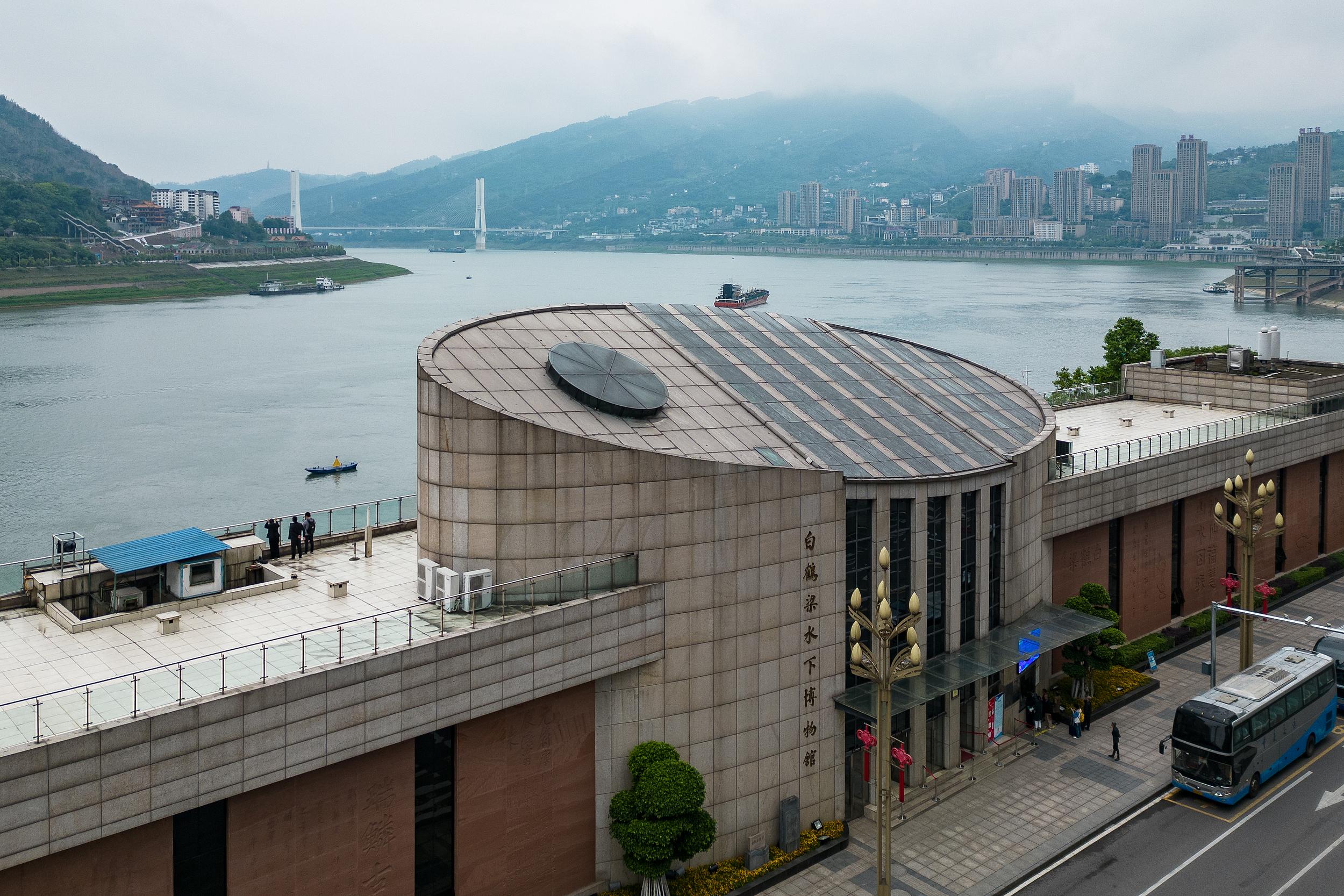Technology Protects Underwater Wonder

The 2024 Baiheliang Tourism and Culture Festival in Fuling district, southwest China's Chongqing municipality, has seen a flood of visitors to Chongqing head for the Baiheliang Underwater Museum, described by UNESCO as "a fabulous first-world-wide example of the presentation of underwater cultural heritage in a site reachable by the non-diving visitor."
However, Baiheliang once faced permanently sinking to the bottom of the Yangtze River because of the operation of the Three Gorges Dam. Saving the precious cultural relics was an ingenious exercise, made possible by the application of state-of-the-art design and cutting-edge technology.
Difficulty in protecting underwater relics
Known as the world's first ancient hydrologic station, Baiheliang is a stone bridge with a length of 1,600 meters and an average width of 15 meters, which recorded and witnessed the water level changes of over 1,200 years. With 165 inscriptions and 18 carved stone fishes, it boasts significant scientific, historical and art values.
"The approach of preserving the stone bridge [and its inscriptions] with its original site, appearance and environment is unprecedented in the world," Jiang Rui, director of Baiheliang Underwater Museum, told Science & Technology Daily, adding that it took almost 10 years to come up with an effective protection scheme.
In 1994, when the Three Gorges Dam was built, Baiheliang was faced with sinking into oblivion after the dam began to store water. At that time, a stream of experts visited Chongqing to see how they could contribute to saving this cultural relic.
After historical research and scientific consideration, Ge Xiurun, an academician of the Chinese Academy of Engineering, designed the "non-pressure container" scheme.
In the design, a protective cover was built on the original site of Baiheliang, and a net horizontal pressure system was used to discharge the filtered Yangtze River water to maintain the external and internal balance of water in the cover.
Moreover, a circular visitor's gallery was also planned inside the protective cover, which can not only solve the seepage damage, curtain grouting and other problems, but also greatly enhance the visitors' viewing experience.
Construction of the Baiheliang Underwater Museum commenced in 2003 and was finally completed in 2009.
Sci-tech solutions revitalize Baiheliang
"The amount of water in the cover is more than 4,500 tons, and the pump pipes distributed in the museum are continuously pumped, filtered and injected 24 hours a day, to maintain the balance of internal and external water pressure," said Chen Tao, head of the Baiheliang underwater protection project management department.
For the first time, it also adopted innovative solutions such as non-combustible cables and net horizontal pressure systems to ensure the safety of cultural relics. Experts also replaced the aluminum alloy lamps used before with stainless steel lamps, creating the only deep-water LED lighting system in China at that time.
In order to show the inscriptions clearly, the museum has cooperated with scientific institutions to optimize the aviation plexiglass process, upgrading 23 windows with a diameter of 80 cm to be more stable, more pressure resistant and more transparent. The museum has also regularly sent divers down to clean the inscriptions to prevent microbial corrosion.
With the help of digital technology, the museum has also developed a VR project showing the past and present of Baiheliang. "We are working with the Nilometer of Rhoda Island in Egypt to jointly apply for the world cultural heritage status, hoping China's Yangtze River civilization merges with the world's river civilizations," Jiang said.






